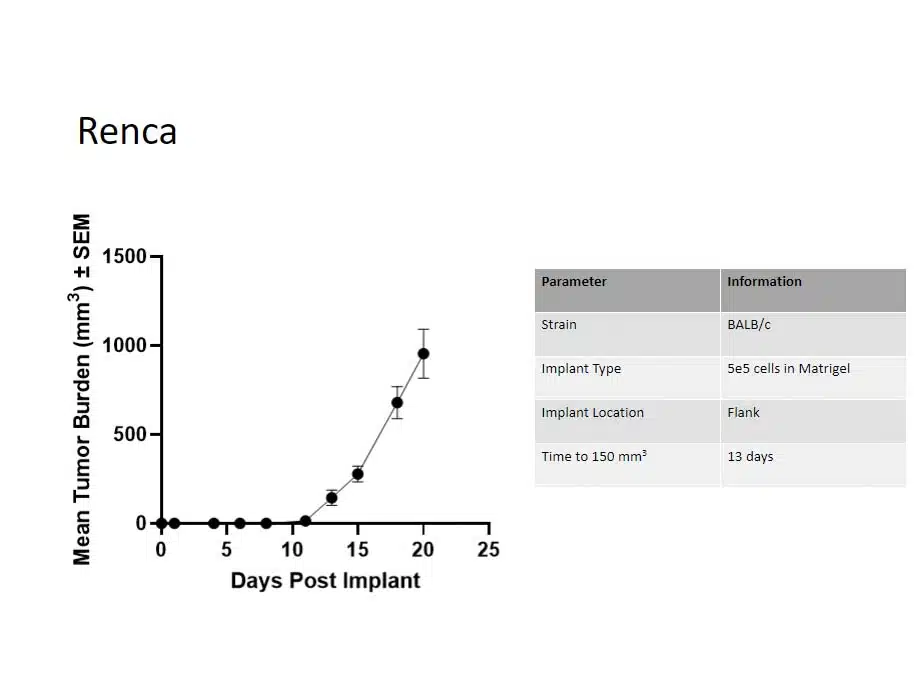
Renca is a mouse renal adenocarcinoma cell line that is used in generating syngeneic models, its characteristics make it a prime model for studies on angiogenesis and immune checkpoint inhibitors such as PD-1.
Metastatic Potential
Renca cells have been shown to metastasize to the lungs and lymph nodes, making it a valuable model for studying kidney cancer metastasis.
Fast-Growing Tumors
Renca tumors grow rapidly and can be established easily in mice, which allows for quick testing of potential therapeutic agents.
Treatment Testing
The Renca mouse model has been used to test the efficacy of various treatments, including immunotherapies, targeted therapies, and chemotherapy.
Renca Syngeneic Renal Carcinoma Model
The Renca Carcinoma Model is well suited for analysis of both primary and metastatic tumor sites.
Epithelial cells that have been isolated from a spontaneous tumor on the kidney of a 6 week old male Balb/cCr mouse with renal cortical adenocarcinoma. These are considered highly aggressive and invasive.
Renca models accurately mimic tumor growth in human adults that have renal cell carcinoma making it an ideal model for RCC metastasis. These can be cultured in vitro or transplanted in vivo by intraperitoneal, subcutaneous, or subcapsular renal injections in syngeneic Balb/c mice or as an orthotopic model implanted under the kidney capsule.
The following types of treatment are currently used in practice: Surgery (partial/simple/radical nephrectomy), radiation therapy (external), chemotherapy (systemic), immunotherapy (CTLA-4, PD-1/PD-L1, Interferon, IL-2) and targeted therapy (Monoclonal antibodies/kinase inhibitors or VEGF/mTor inhibitors).